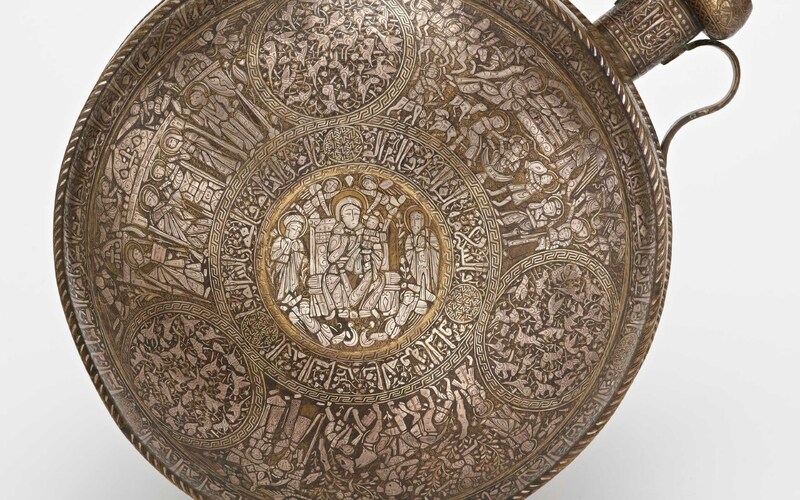Freer Canteen
Type:
Pilgrim souvenirs,
Flasks
Date:
First half of the thirteenth century
Location or Findspot (Modern-Day Country):
Syria
Medium:
Brass
Dimensions:
45.2 × 36.7 cm
Description:
Biblical images became increasingly common in Islamicate arts of the thirteenth century. Objects created in the Ayyubid Empire, which included modern-day Syria, Egypt, and parts of Yemen and Iraq, were destined for Muslim and Christian patrons alike and included imagery that was not exclusive to one faith or the other. The Freer Canteen, a brass bottle in the shape of a ceramic pilgrim flask, has silver inlays of biblical scenes from the life of Christ. These include the Annunciation, the Nativity, the Adoration of the Magi, the Presentation in the Temple, and the Entry into Jerusalem. Even though Joseph does not appear in the Qur'an (Christ is simply the "son of Mary"), he does appear in several scenes on this canteen. The canteen does not, however, include images of the Crucifixion and Resurrection, which Muslims explicitly rejected. The patron may have been a wealthy Christian pilgrim to the Holy Land. With its particular combination of makers and users, the canteen offers evidence of how problematic it may be to identify a motif as "Christian" just because it features images of Christ.
Relevant Textbook Chapter(s):
8
Repository and Online Resources:
• The canteen is now in the Smithsonian's National Museum of Asian Art (Freer Gallery of Art) in Washington, DC.


